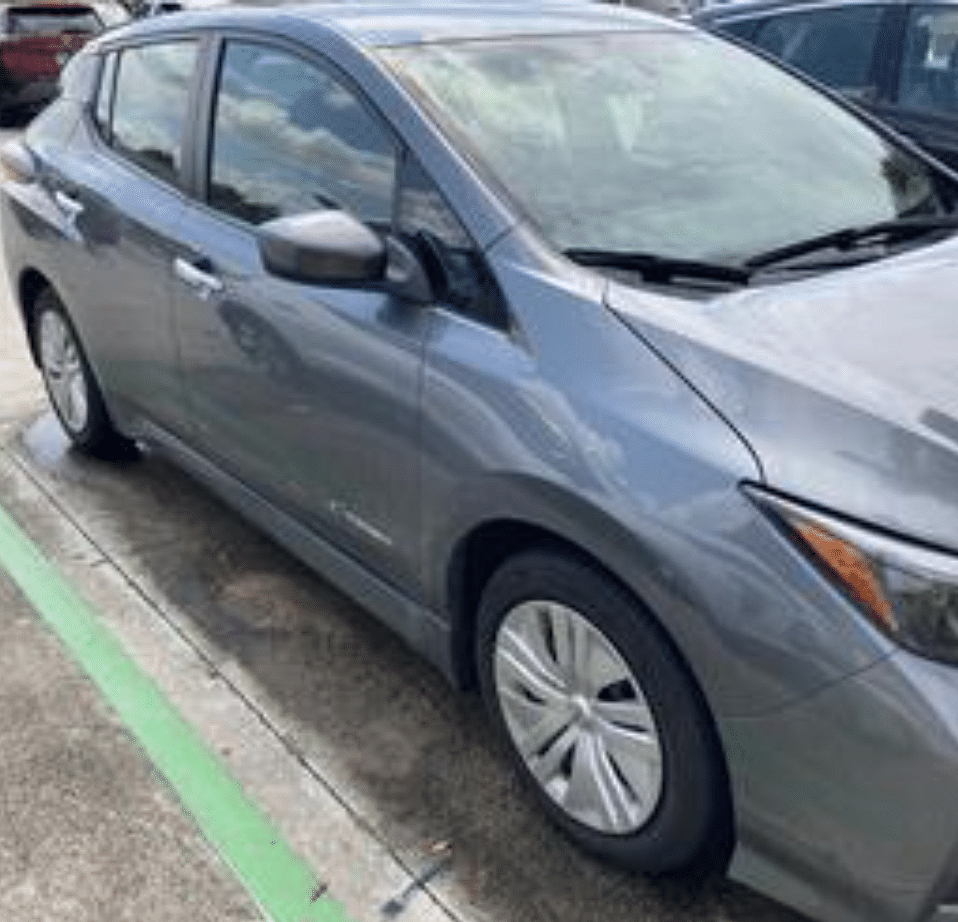Leaf uses an electric motor to drive the wheels instead of a gasoline engine, hence the name 'electric car'. Its AC Synchronous Motor produces 147 Horsepower and 236 Pound-feet of torque. If these numbers don't catch your fancy, well, you're in luck! Nissan now offers a more powerful motor in the 'Plus' trim, 215 HP to be exact. The improved power helps with the drivability, and it also gets a better range than the standard model.
The biggest problem with electric cars is the charging time. With a standard 110 Volt outlet, the Leaf will attain a full charge in a staggering 35 hours. If you do plan on using your car for daily errands though, there is a better charging method. A quick charging outlet will give the car enough juice for 90 miles in just 30 minutes, which is a lot more practical.
|
Models
|
Nissan LEAF S hatchback
|
Chevrolet Bolt EV LT hatchback
|
BMW i3 120Ah hatchback
|
Kia Soul EV wagon
|
Toyota Prius C L hatchback
|
|
MSRP
|
$30,885
|
$37,495
|
$44,450
|
$34,945
|
$22,460
|
|
Engine
|
-
|
-
|
-
|
-
|
1.5L i4 Gas/Electric
|
|
Transmission
|
1-speed direct drive
|
1-speed direct drive
|
1-speed direct drive
|
1-speed direct drive
|
Continuously variable automatic
|
|
Horsepower
|
147 hp@ 3282rpm
|
200 hp
|
170 hp@ 4800rpm
|
109 hp@ 8000rpm
|
99 hp @4800rpm
|
|
Torque
|
236 ft-lbs.
|
266 ft-lbs.
|
184 ft-bs
|
210 ft-lbs.
|
82 ft-lbs.@ 4000rpm
|
Chevrolet Bolt is a surprisingly powerful electric car, with a 200 Horsepower motor. Then there is the BMW i3, which is one of the only two products in BMW's i-series of cars. The i3 is an electric car but gets a range-extender 3-cylinder gasoline engine that charges the battery when your electric charge runs low.
There's also Kia's electric vehicle, the Soul EV wagon/hatchback. With just 109 Horsepower max output, it is on the lower end of the spectrum. For comparison purposes, there is Prius C included here, Toyota's compact hybrid hatchback, just to check how the purely electric cars stack against a similar hybrid car.
How fast is the 2019 Nissan Leaf?
Testing performance in environment-friendly cars is extremely counter-intuitive, as you end up not using the car in a sustainable way. The faster the charge runs out, the faster you have to search for a charging port.
Also,electric cars are a mixed bag in terms of acceleration. You get instant torque from the electric motors, which gives you blinding acceleration for a moment. Then, when the motor reaches the peak output, you'd be left wishing for more juice. Nissan Leaf is just the same, with the 'Plus' being a little better, but still the same.
|
Models
|
Nissan LEAF S hatchback
|
Chevrolet Bolt EV LT hatchback
|
BMW i3 120Ah hatchback
|
Kia Soul EV wagon
|
Toyota Prius C L hatchback
|
|
0-60 MPH
|
7.5 sec
|
6.5 sec
|
7.2 sec
|
N/A
|
10.6 sec
|
|
Quarter mile
|
N/A
|
N/A
|
N/A
|
N/A
|
N/A
|
|
Emission
|
-
|
-
|
-
|
-
|
3.8
|
The Nissan Leaf is the slowest car in this comparison. However, it is still much better than the cars powered by an internal combustion engine at the same price point when it comes to acceleration. The bigger battery and the stronger motor help Bolt EV move past its rivals when it comes to the 0-60 mph timings.
Ride and Handling
The ride and handling of the Leaf aren't particularly impressive but not completely disappointing. The steering doesn't weigh up when the speed increases, and the feedback is minimal. The low mounted battery does give it a low center of gravity, which inspires quite a lot of confidence, although the skinny tires don't offer much grip.
The lack of pesky clutch pedals and gear shifters does make life easy in the cities. To be honest, with its simple controls, driving the Leaf feels more like playing a videogame. The ride quality on offer remains comfortable on most roads but fails to impress when it comes to handling rough road situations.
Braking performance
To decelerate gently, you need not use the brake pedal, as you would in a conventional car. Instead, just roll off the accelerator, and the car will convert your motion (kinetic energy) into battery charge (electrical energy). When the need to shed speed is high though, you can depress the pedal and disc brake setup on all four wheels get engaged. With left foot hard on the pedal, this car comes to a dead stop at a distance of 128 feet, which is average.
|
Model
|
Nissan LEAF S hatchback
|
Chevrolet Bolt EV LT hatchback
|
BMW i3 120Ah hatchback
|
Kia Soul EV wagon
|
Toyota Prius C L hatchback
|
|
Brake Front (in.)
|
11.1
|
11
|
11
|
11.1
|
10
|
|
Brake Rear (in.)
|
11.5
|
10
|
11
|
11.8
|
9
|
|
Curb Weight (lbs.)
|
3433
|
3563
|
2965
|
3289
|
2530
|
|
60-0 MPH (ft.)
|
N/A
|
N/A
|
N/A
|
N/A
|
N/A
|
The BMW i3 manages to offer the best in class braking performance thanks to its lighter curb weight. It offers the best in terms of the on-road grip as well. Even the Prius manages to offer confident and sure-footed braking which is due to its lightweight as well.



